Dangerous Duck Hunts
Harrowing tales from those who hunt waterfowl in some of North America's most treacherous locations
Harrowing tales from those who hunt waterfowl in some of North America's most treacherous locations

Run-of-the-mill waterfowl hunting comes with certain dangers – winter weather, ice, low-light situations, wading and boating hazards, etc. But there are places where duck hunters face life-threatening dangers on a regular basis. Following is a look at some of North America's most hazardous waterfowl hunting venues, and the experiences of those who embrace the challenges of hunting in these locations with a passion.
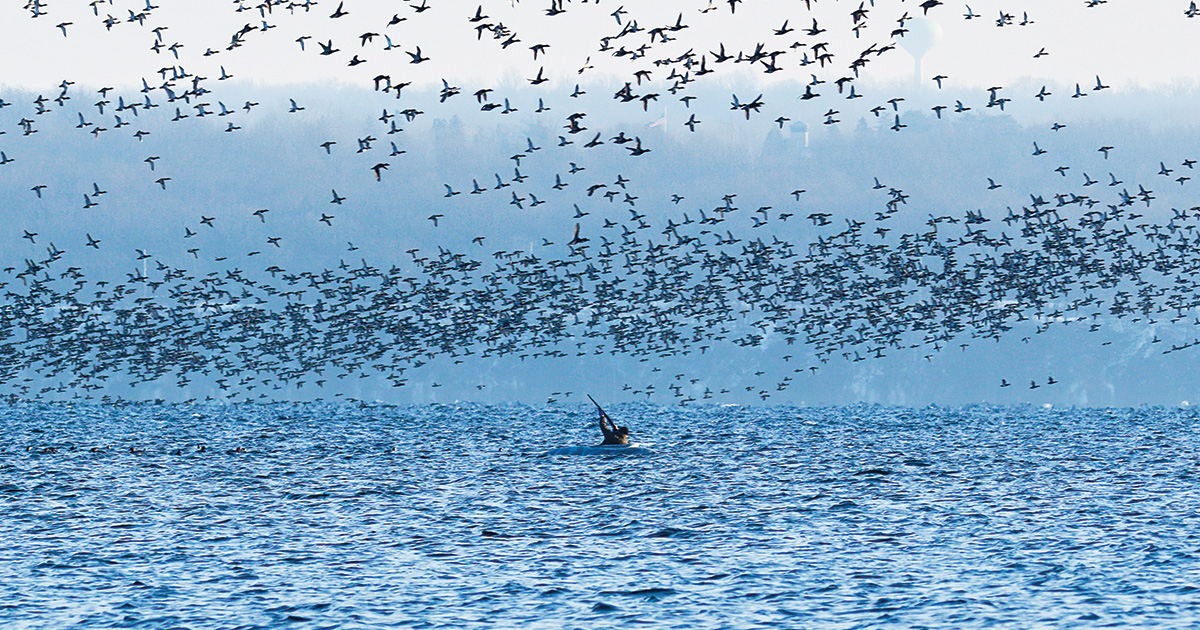
All along the Atlantic coast, waterfowlers venture deep into inlets and small bays surrounded by marshes that can strand a boat in a matter of minutes on an outgoing tide. This situation, while very inconvenient, is usually resolved simply by waiting for the tide to return. But out on the open water, the stakes get higher, and savvy hunters rely on well-equipped boats and hard-won experience to stay safe. This is especially true on the north Atlantic.
Operating off Cape Cod, Massachusetts, Rhode Island and into Maine, Captain Ruben Perez of East Coast Guide Service has seen just about everything the Atlantic can muster. “It’s as dangerous as any place on Earth. When we have to go out regardless of conditions, we eat the weather,” Perez explains. “Think about 12-foot tides, being open to the ocean without a protective lee, and six-foot-plus waves. It can be a deadly combo.”
Coastal Maine’s archipelago of islands and rock reefs, often referred to as ledges, can be extremely dangerous to navigate. Coupled with massive tides, this stretch of coastline is no place for inexperienced boaters. Running across a bay in the dark and slamming into a rock wall the size of a house is a serious possibility.
There are cases of hunters becoming stranded on exposed reefs, only to be washed to their death on an incoming tide. A short story by author Lawrence Sargent, published in 1959, tells the story of such a tragedy, and while Sargent’s tale is fictional, the reality is that hunters who find themselves in such a situation may not live to tell about it.
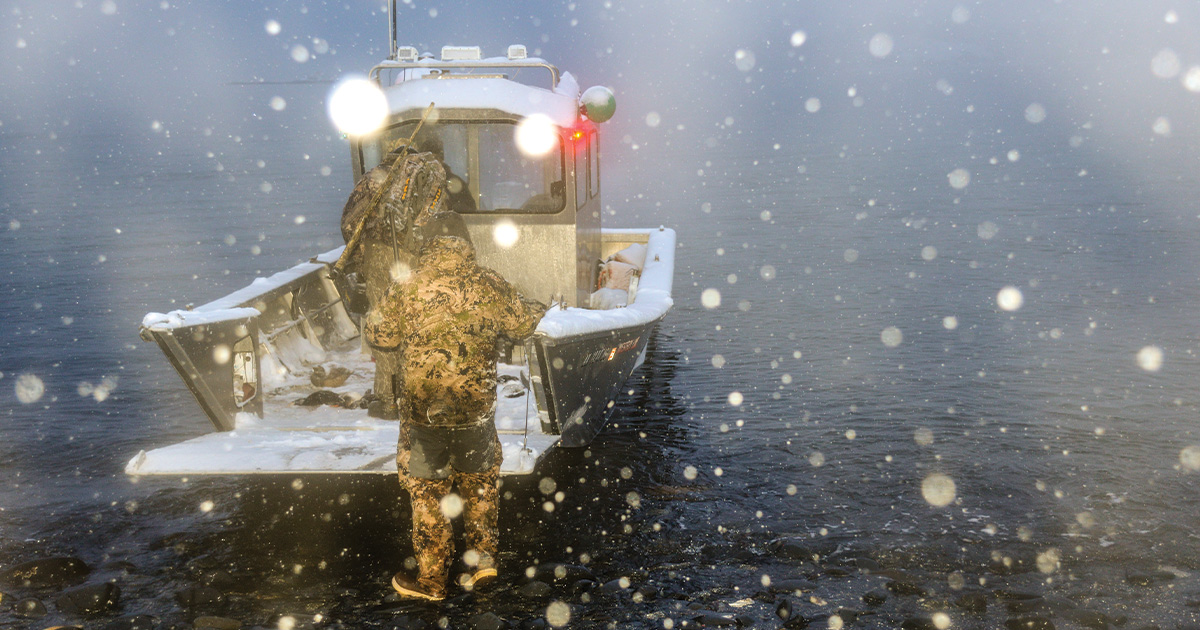
The northern neighbor of the Pacific Ocean, the Bering Sea presents many of the same challenges as the north Atlantic, except on steroids. Nevertheless, adventurous waterfowlers are drawn to this treacherous northern ocean because it offers some of the finest sea duck hunting in the world.
“It is the ultimate waterfowling experience, but it’s no joke out there. The waves are bad all the time, there is constant wind, and the currents are terrifying,” says Connor Barr, who guides for King Eider Adventures, which is based on volcanic St. Paul Island located 320 miles west of mainland Alaska. “You’re in 600 feet of water, and it’s wild and unforgiving. There is very little support nearby as far as rescue goes and help may be hours away.”
Barr shares unsettling stories of launching inflatable Zodiacs from the beach in strong surf and avoiding trouble spots including “breaks,” which are reefs with immense currents that are capable of pulling small craft laterally even when running full throttle, as he experienced with King Eider Adventures owner and guide Jeremy Ullman.
“Jeremy told us right away, if you see breaks in the middle of the ocean where there is no other whitewater, stay very far away from it. Trust me, you do not want to get close, like within 300 yards,” he explains.
Oceans are formidable bodies of water and without extensive firsthand experience or the assistance of a very knowledgeable individual, it’s highly advisable to hire a guide who spends every season on the water.
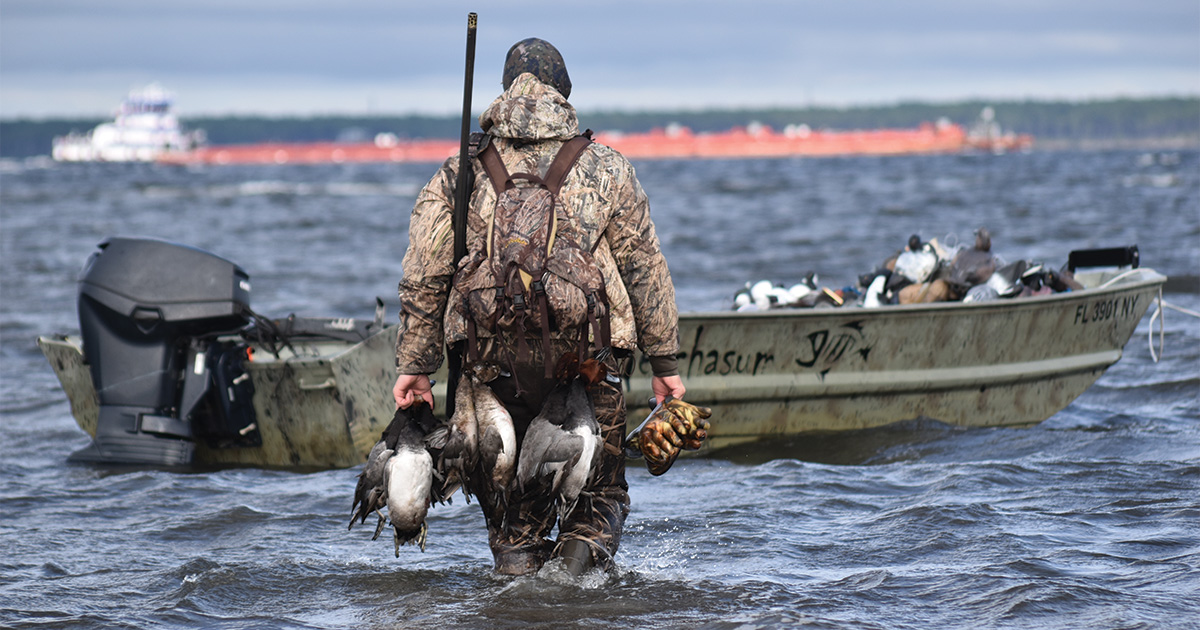
Large inland lakes and rivers can also be very dangerous, and the Great Lakes and their connecting waters have claimed many waterfowlers' lives in bad weather. Relatively shallow expanses of water where ducks congregate can be whipped into a deadly cauldron of rip currents and rapid-fire waves in a matter of minutes.
“While the Bering Sea is the most hardcore hunt of all and the Great Lakes don’t have tides, it’s still big water and the water temperatures get very cold,” says Ullman, who also owns MI Guide Service, which operates on Lakes St. Clair and Huron. “Great Lakes waves are notoriously dangerous, and some ship captains I know fear them more than the waves they deal with on the ocean."
Fate of the Edmund Fitzgerald
It is estimated that there are over 6,000 shipwrecks in the Great Lakes. This number includes massive 700-foot-long freighters such as the famous Edmund Fitzgerald, which buckled and sank when struck by massive Lake Superior “twin sister” waves while carrying a heavy load of iron ore.
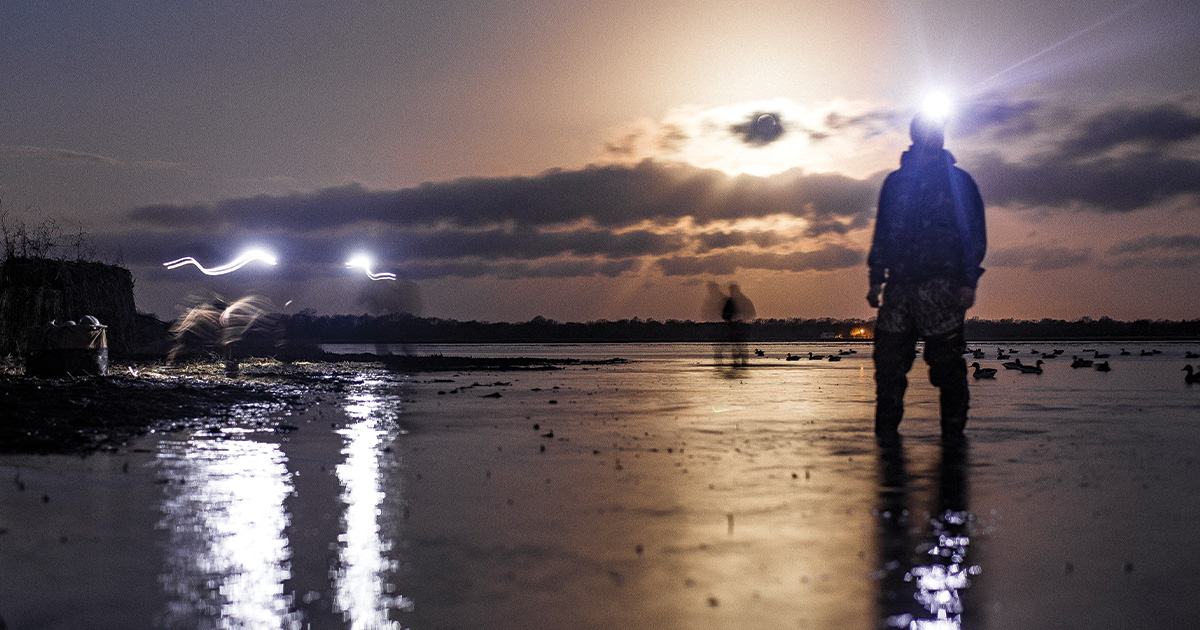
Very few waterfowlers run the risk of getting attacked by a large carnivore while hunting ducks and geese, but along the shores of Hudson Bay that is a possibility, granted a remote one. The Hudson Bay lowlands of Manitoba offer incredible goose hunting, and a select few hunters venture to this truly wild landscape each fall where polar bears roam with little fear of man.
Momarsh founder Ira McCauley has made several trips to goose hunt on the Hudson Bay coastline. “We've had lots of polar bear encounters. In the fall they have quite a bit to eat, so they generally are not something you really have to worry about too much, unless you put yourself in a bad situation,” McCauley explains.
“A few times we have had to leave our decoy spreads. Not that the bears were coming to get us, but they’d appear or be headed down the coast, so we’d just let them have their space. We saw them all the time, but I never really felt threatened; most of them were just minding their own business.”
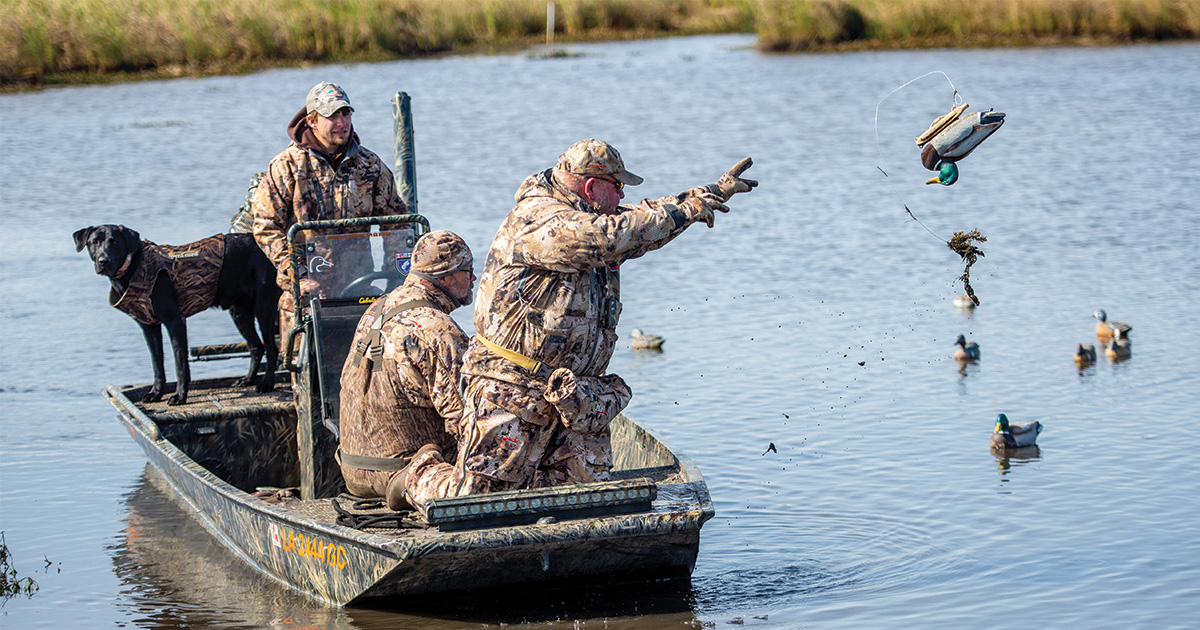
In the Deep South, venomous snakes and alligators can be a concern for hunters and their dogs. Snake bites are rare and usually occur by accident, but large gators are a legitimate hazard for hunters and retrievers. No Limit Waterfowl owner and guide Justin Driscoll specializes in trophy canvasback hunting on Lake Seminole along the Florida-Georgia border. While never attacked by an alligator, he has had some encounters with these large reptiles that are pure nightmare fuel. In one instance, a huge gator approached within 30 yards while he was picking up decoys in chest deep water.
“I wouldn’t say gators are a big risk, but they are definitely something to be aware of, especially if you hunt with a dog,” Driscoll says.
Ducks Unlimited uses cookies to enhance your browsing experience, optimize site functionality, analyze traffic, and deliver personalized advertising through third parties. By continuing to use this site, you agree to our use of cookies. View Privacy Policy